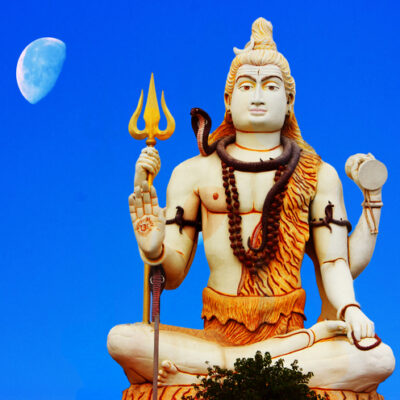Marghat Hanuman Temple, New Delhi

Address
Marghat Hanuman Temple , New Delhi
Kashmere Gate, New Delhi,
Delhi 110006.
Moolavar
Hanuman
Introduction
- The Marghat Hanuman Temple is a famous Lord Hanuman temple located in the Kashmiri Gate area of Delhi, near the Old Delhi Railway Station.
- The temple, also known as Jamna Bazaar Hanuman Temple, is one of the oldest temples in the city, with an uncertain history regarding its construction. While some believe it to be 100 to 200 years old, others claim it to be 1000 years old. According to some researchers, it could have been one of the five temples built by the Pandavas during the Mahabharata era.
- Situated behind the Red Fort and on the way to Satara village, the temple appears to be ancient based on the idol and structure.
Puranic Significance:
- Legend has it that the Marghat Hanuman Temple is one of the five temples built by the Pandavas during the Mahabharata era.
- The Lord Hanuman idol in the temple is situated about 7-8 feet below ground level. Initially, the temple was located on the banks of the Yamuna River. Over time, the river’s water level receded, and the temple was left further away from the banks.
- Mythological Stories:
- Hanuman’s Rest: According to one legend, Lord Hanuman stopped here to rest while on his way to bring the Sanjeevani herb to revive Lakshmana. At that time, the area was a cemetery, and the Yamuna River passed through the site. This is why the temple is named “Marghat Temple,” with “Marghat” meaning cemetery.
- Swayambhu (Self-manifested) Hanuman: The temple is believed to have a Swayambhu (self-manifested) idol of Lord Hanuman. It is said that whenever the Yamuna River swells, the water enters the temple and submerges the idol up to the shoulder level.
- Markhatwala Hanuman: Another legend tells that after Hanuman rested here, the souls of those wandering in the cemetery requested his blessing for salvation. He granted them peace and was later named Markhatwala Hanuman.
- Darshan of Goddess Yamuna: It is also believed that after this incident, Goddess Yamuna appeared and blessed Lord Hanuman, stating that he would be worshiped at the site in the future, and she would visit him every year.
Historical Significance:
- The statue of Lord Hanuman is said to have been discovered in the Yamuna River, which once flowed near the temple. The statue is not just an idol but is believed to be the image of Lord Hanuman chiseled into a rock.
- Over time, the river shifted its course about 10 kilometers away from the temple. The statue, once submerged, was later discovered buried twenty feet underground and was eventually housed in the temple structure.
Beliefs:
- Devotees believe that by worshiping Lord Hanuman at this temple, one can have their wishes fulfilled and rid themselves of ill effects like evil eye and black magic.
- There is also a hall with no lighting, and steps lead below the ground to where the idol of Lord Hanuman is consecrated and worshipped.
Special Features:
- Guardian of the City: Lord Hanuman is believed to be the guardian and savior of Delhi.
- The Submerging Idol: A unique feature of the temple is the belief that during periods of high water in the Yamuna River, the water inside the temple does not exceed the nose level of the Lord Hanuman idol, even if the river’s water rises dangerously high. It is said that if the water were ever to rise above the nose of the idol, it would signify the destruction of the city.
- Consistent Water Levels: Despite the Yamuna River overflowing during floods and inundating the city, the water inside the temple never rises above the nose level of the idol. On normal days, the temple remains completely dry, even during heavy rain.
- Protection from Evil: Worshiping Lord Hanuman in this temple is believed to offer protection from evil spirits, black magic, and sorcery. Similar temples are found in Rajasthan, where Hanuman is worshiped for these purposes.



Century/Period
1000 years old
Nearest Bus Station
Kashmiri Gate.
Nearest Railway Station
Delhi
Nearest Airport
Delhi









